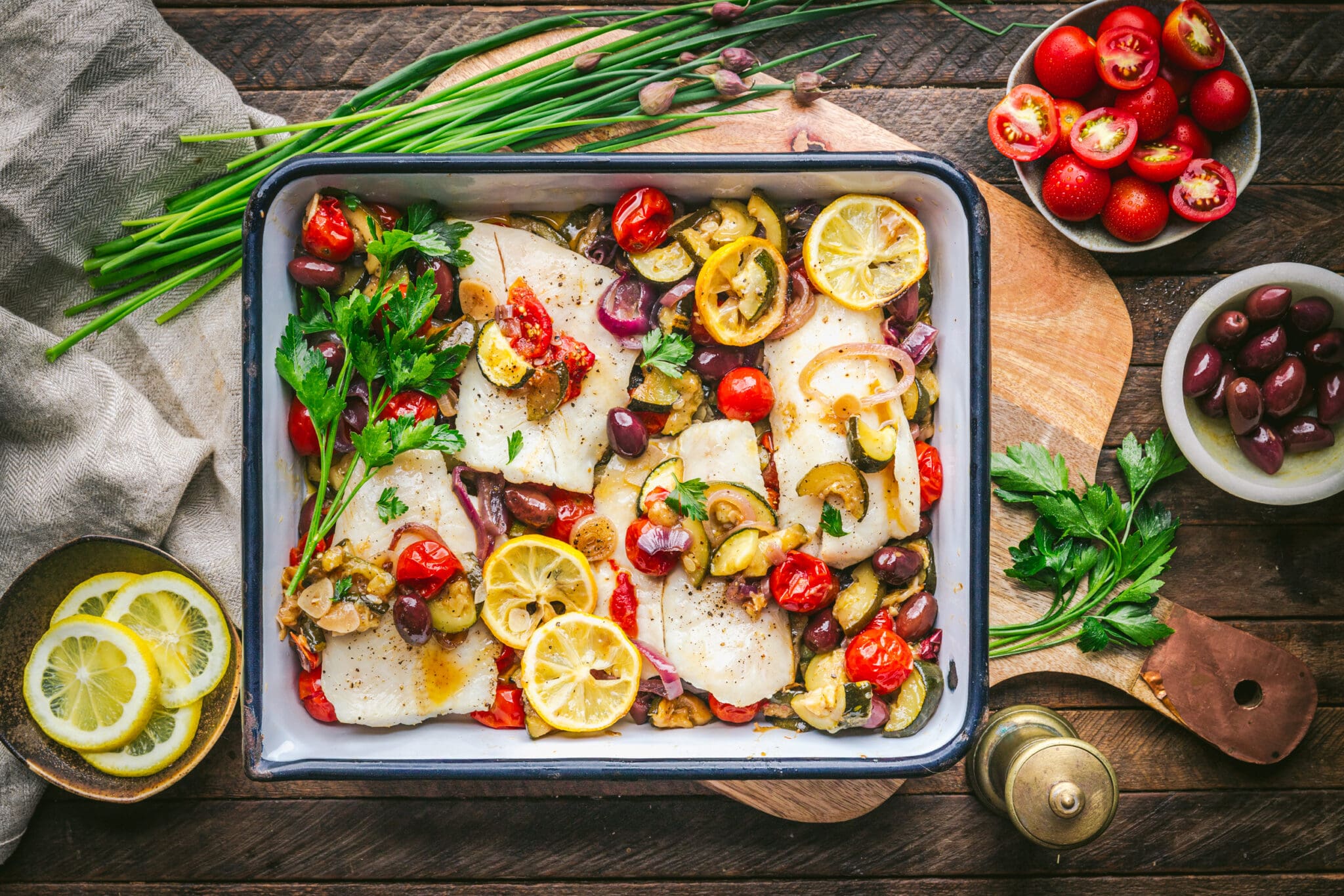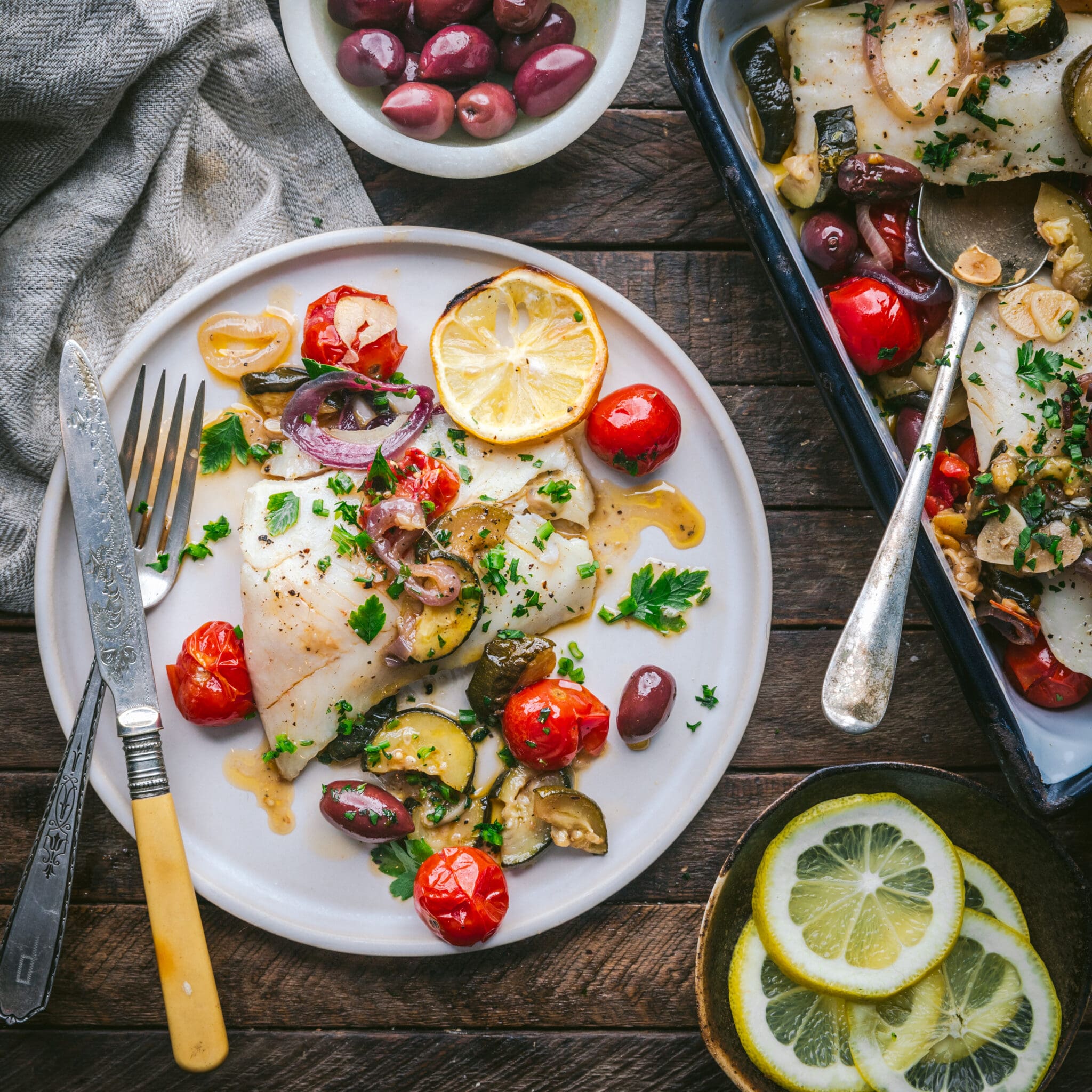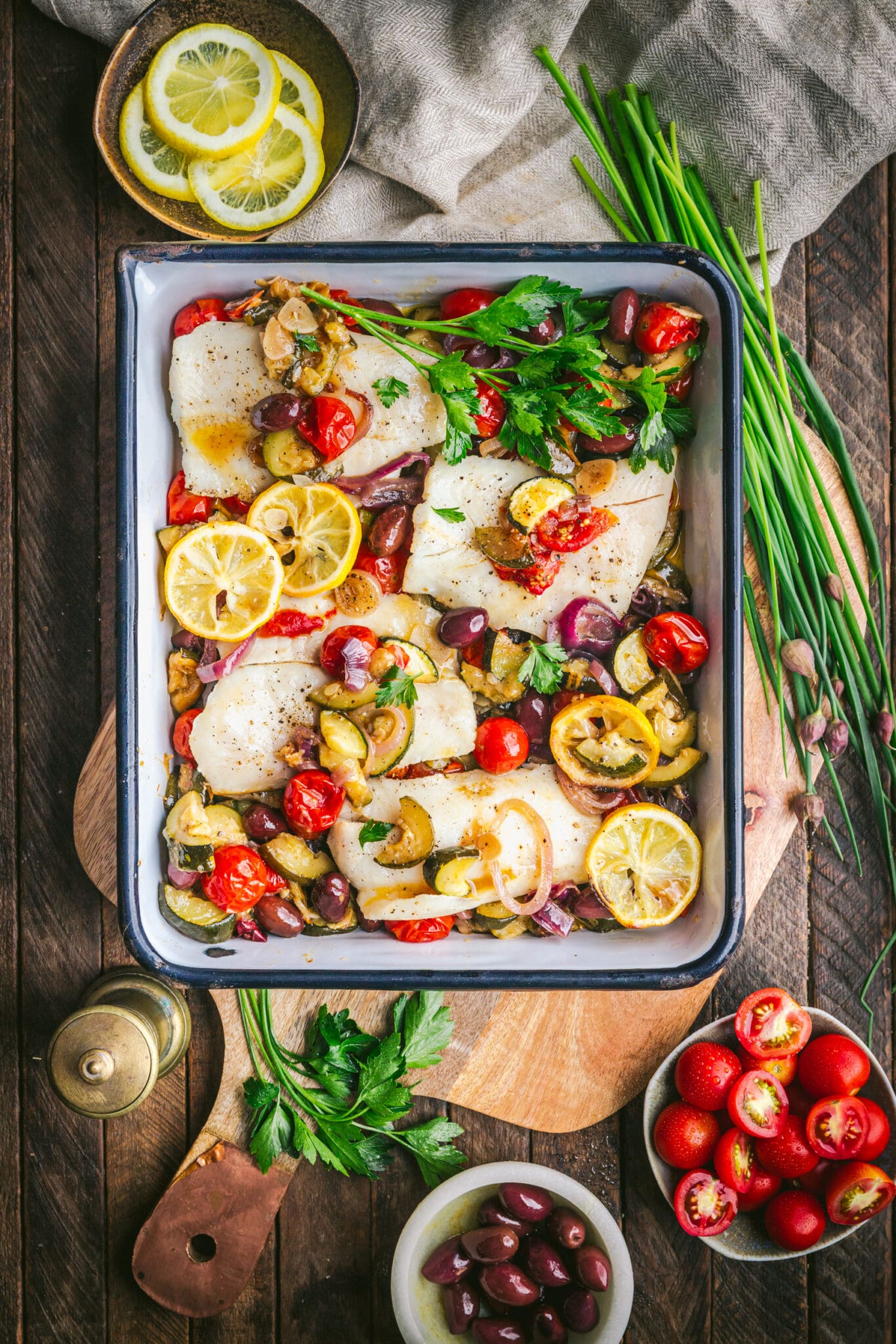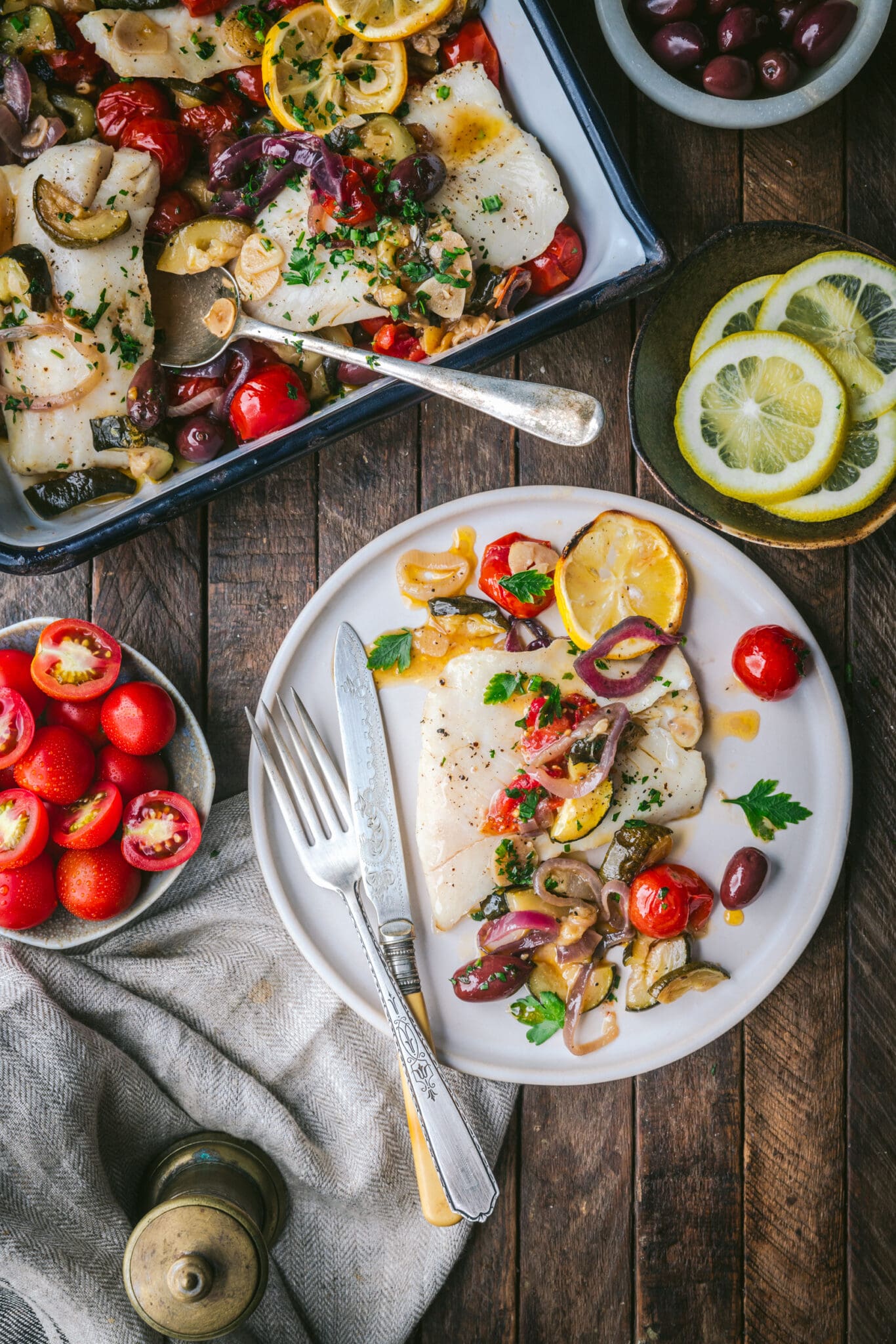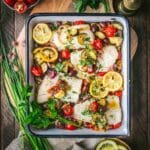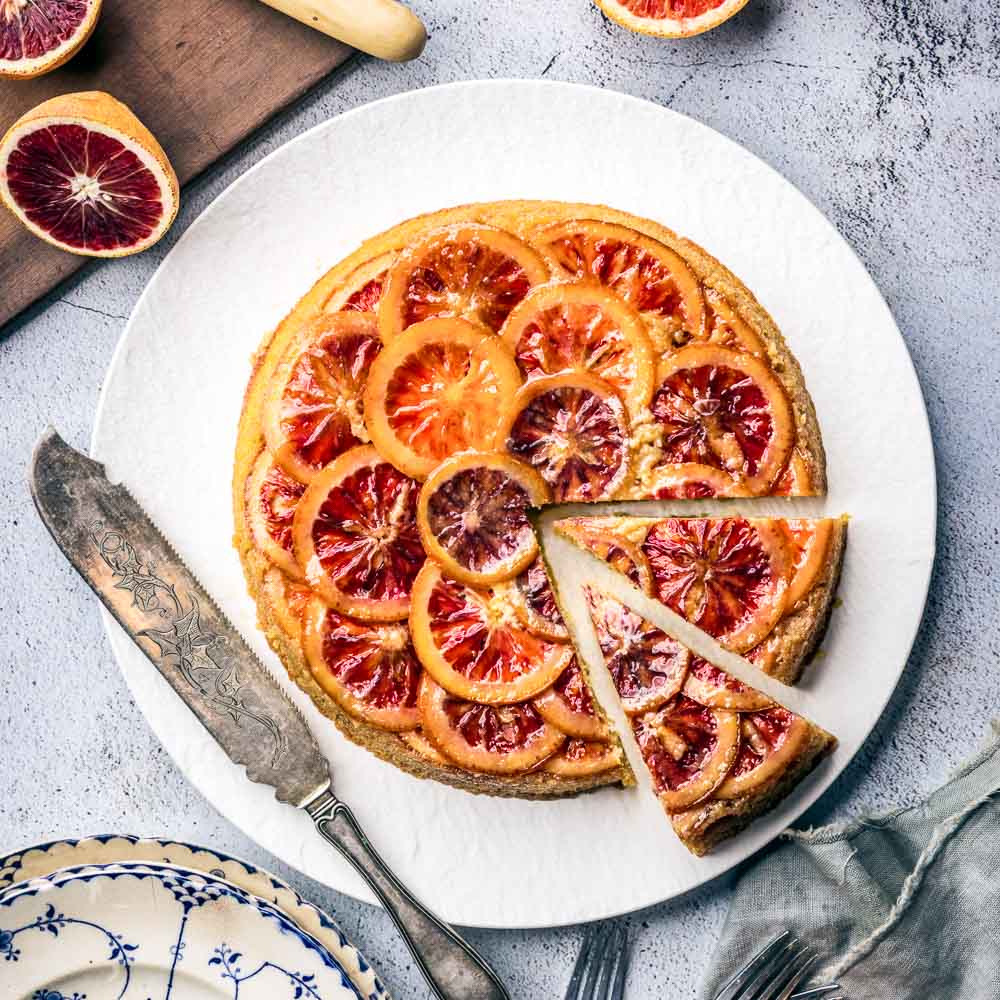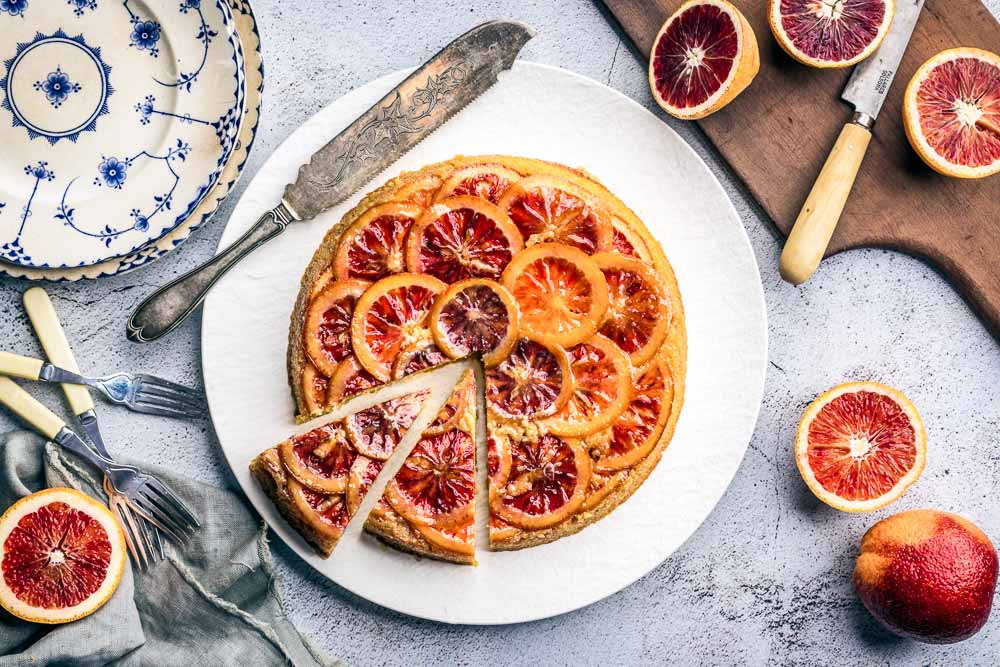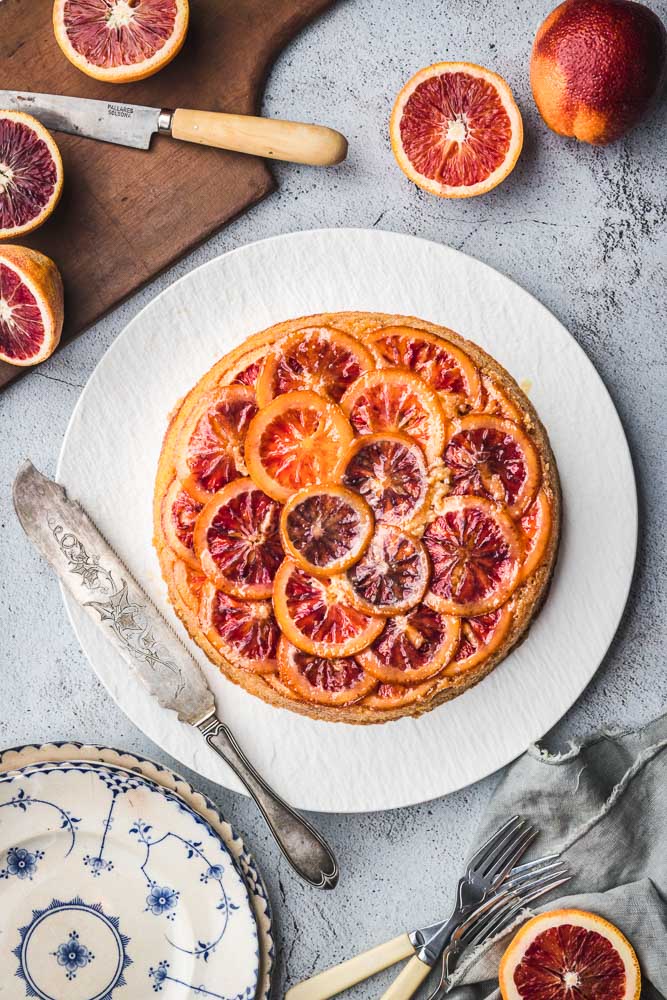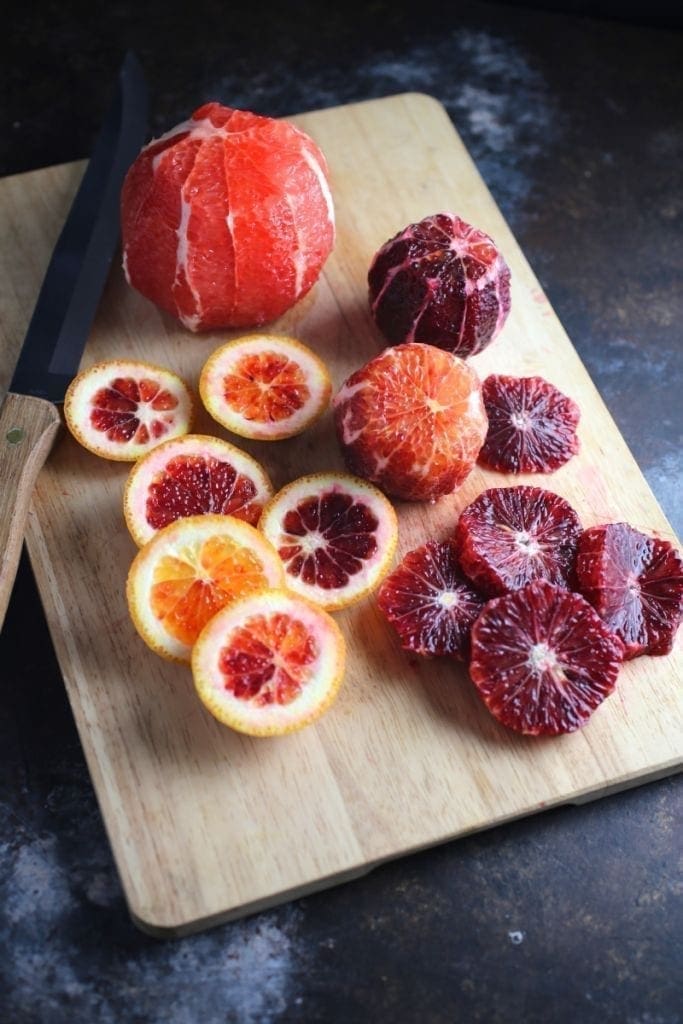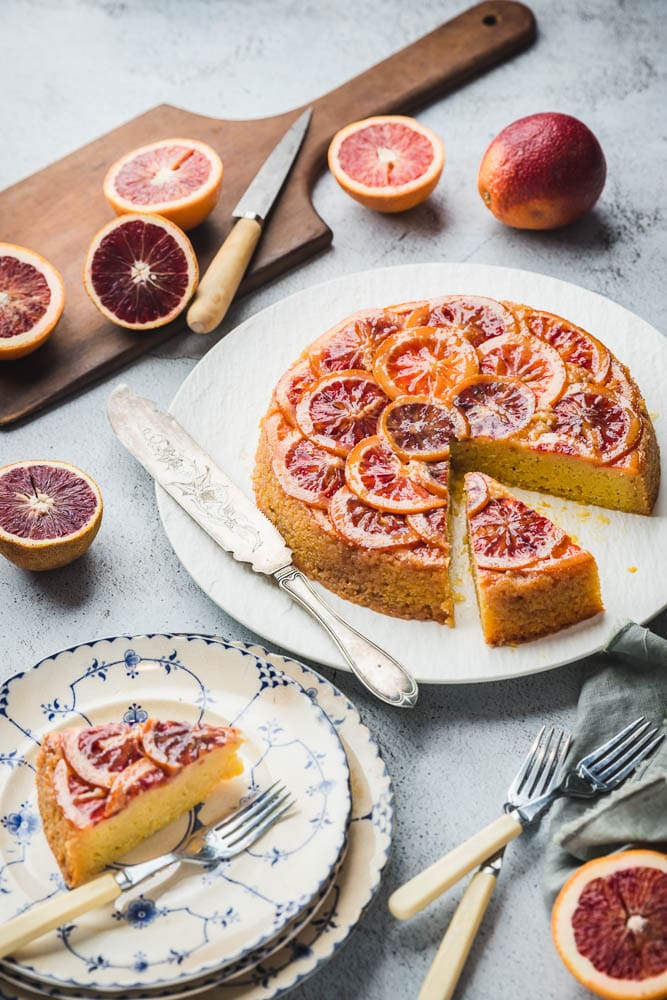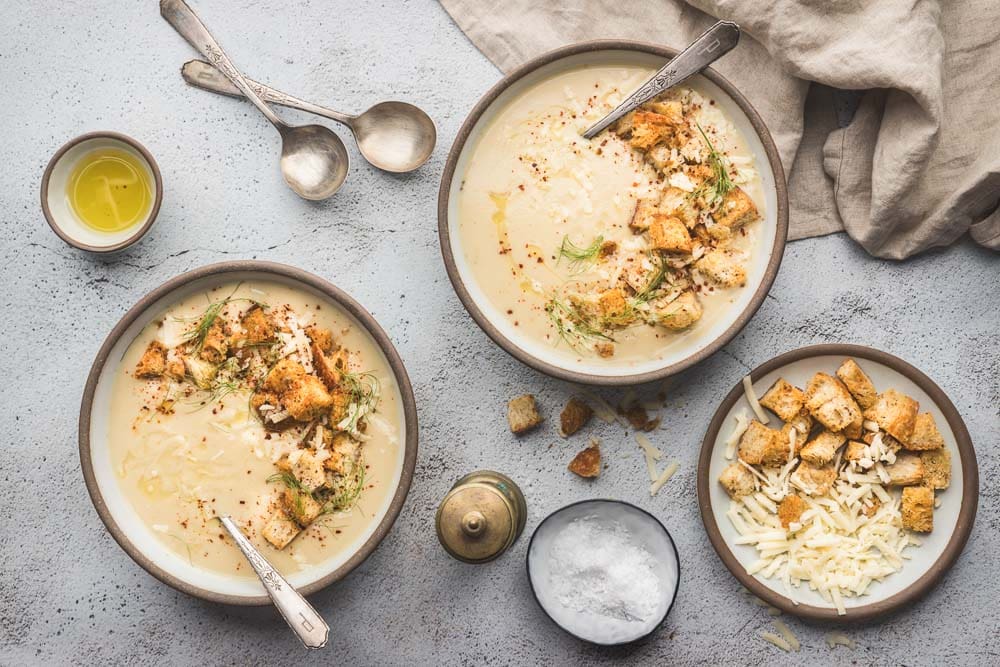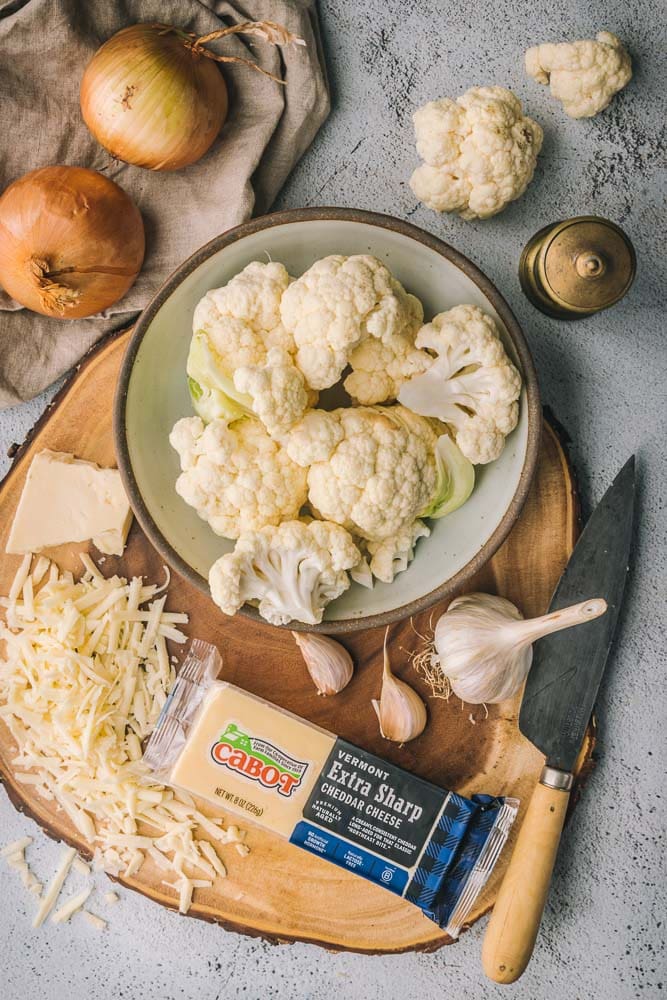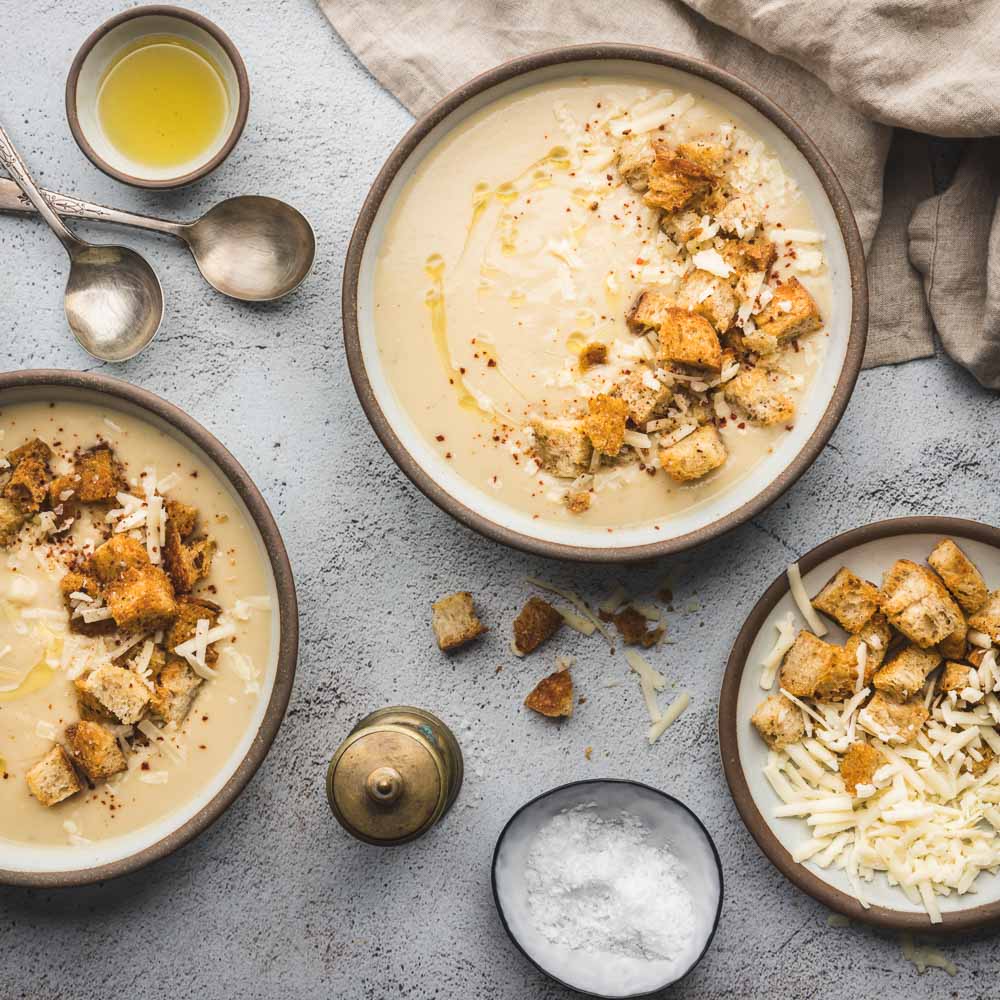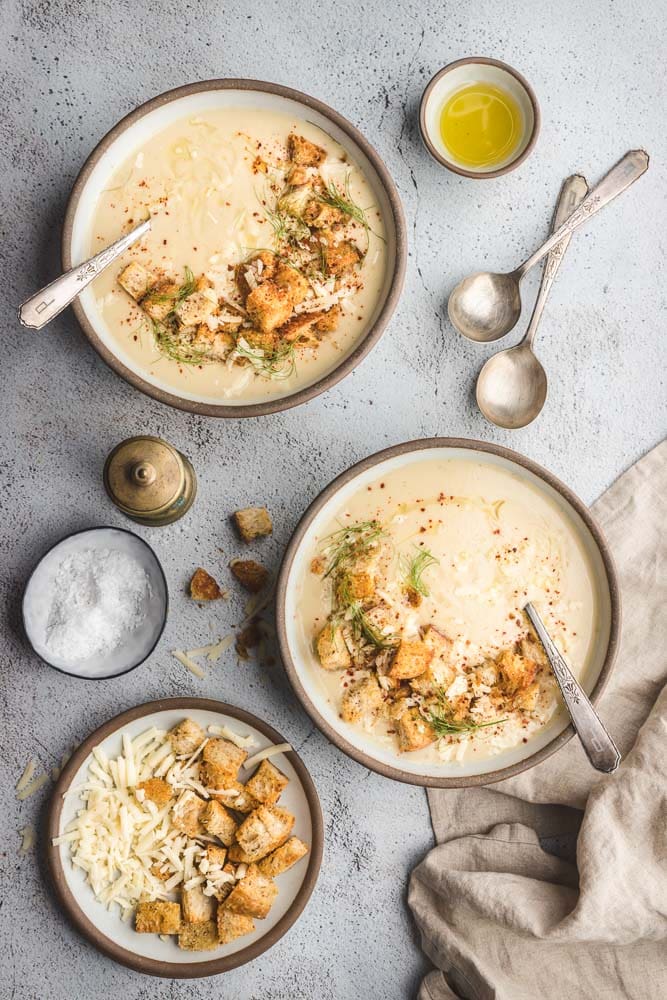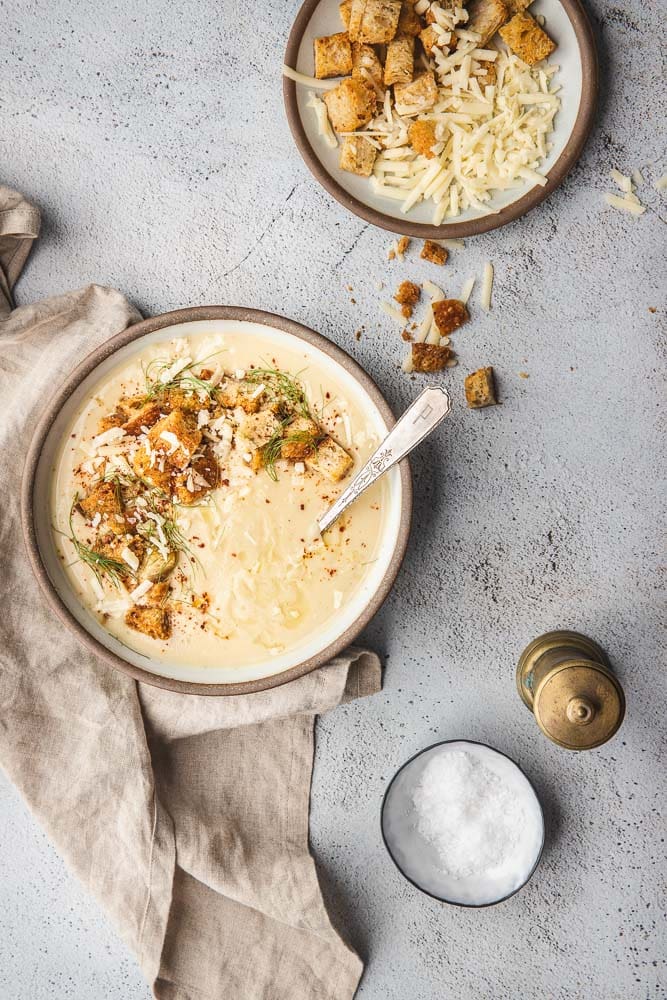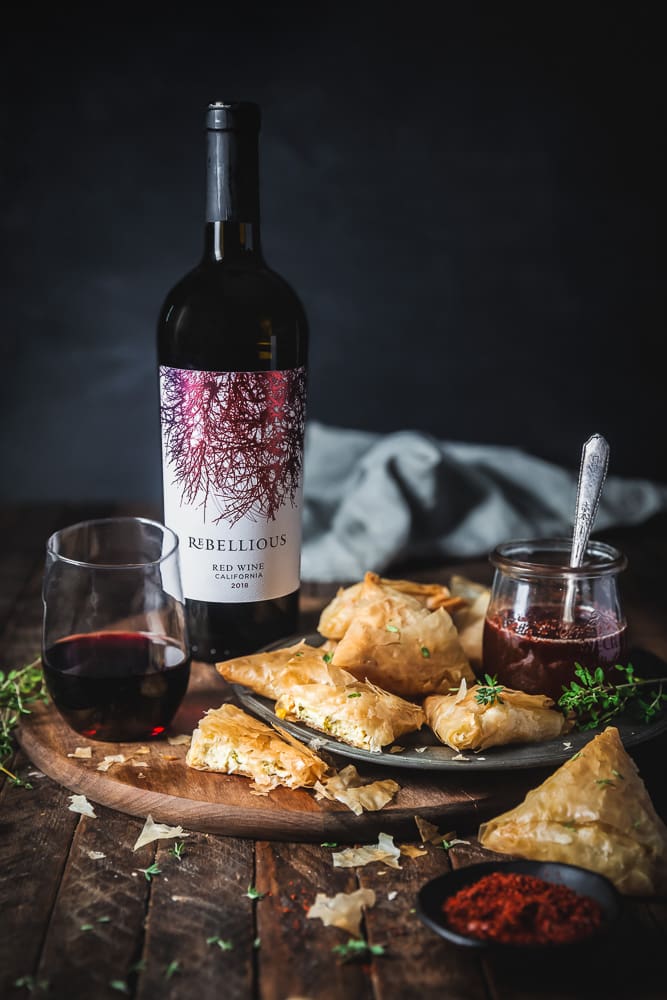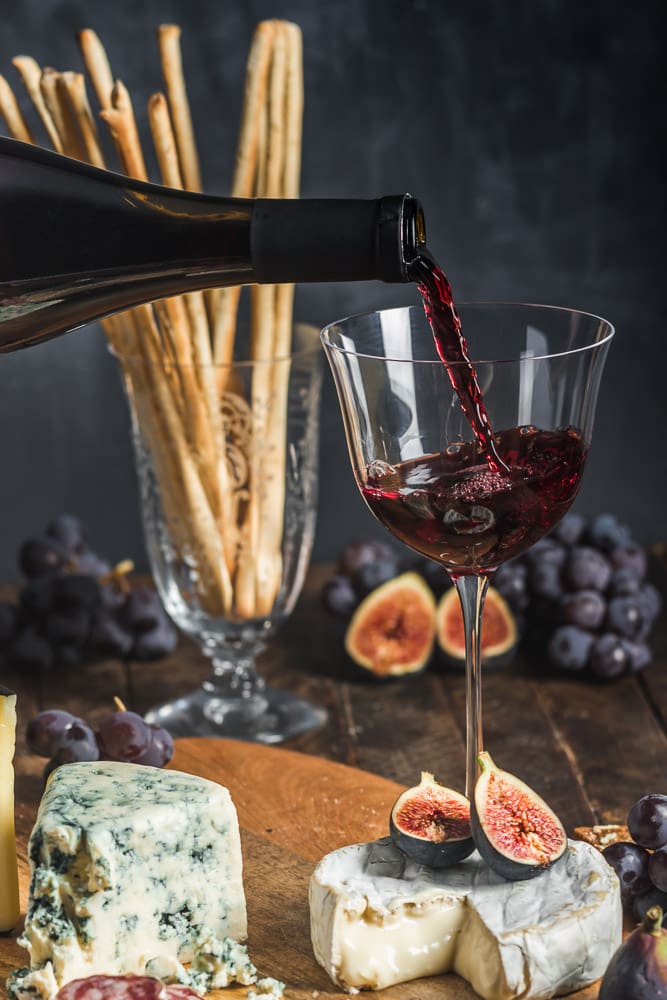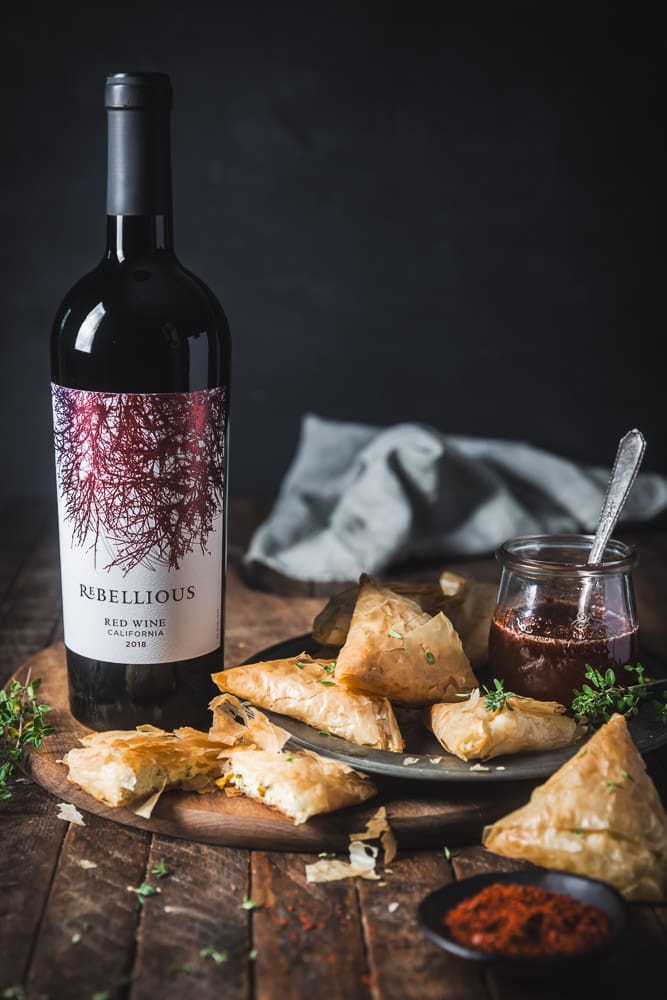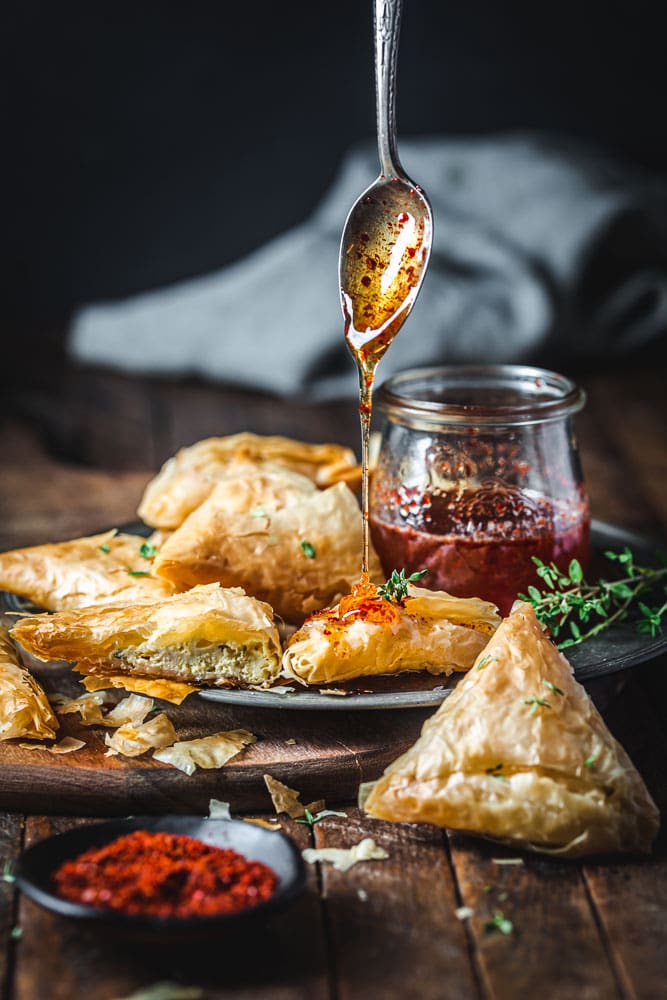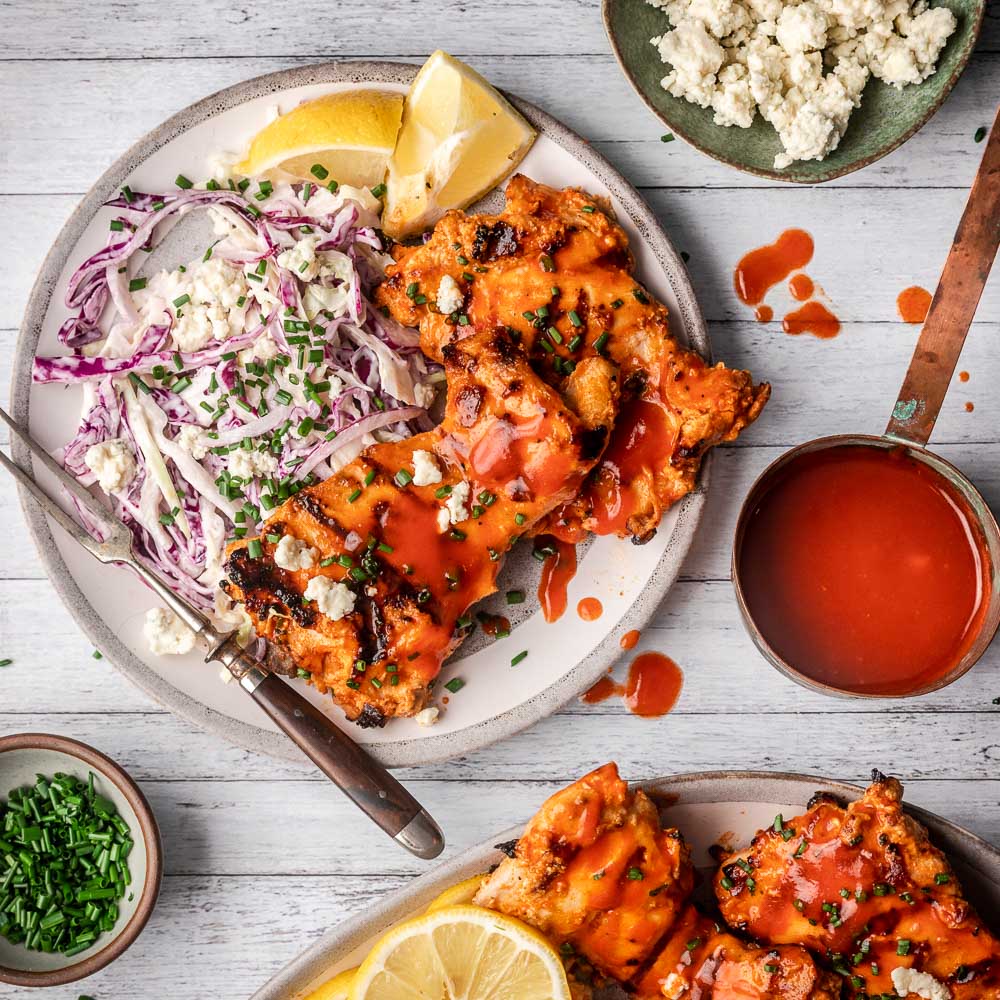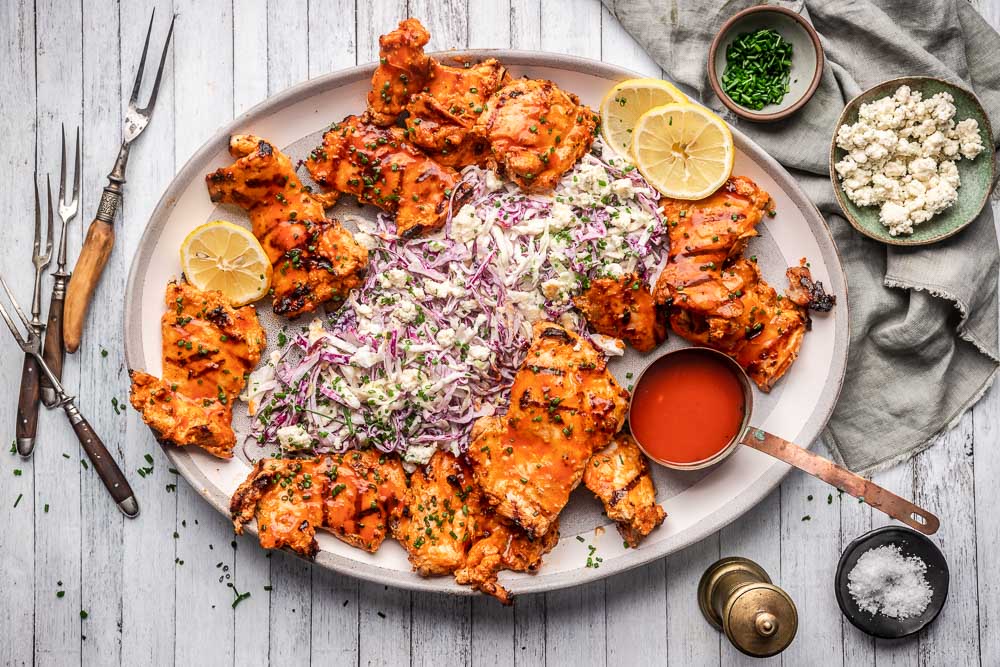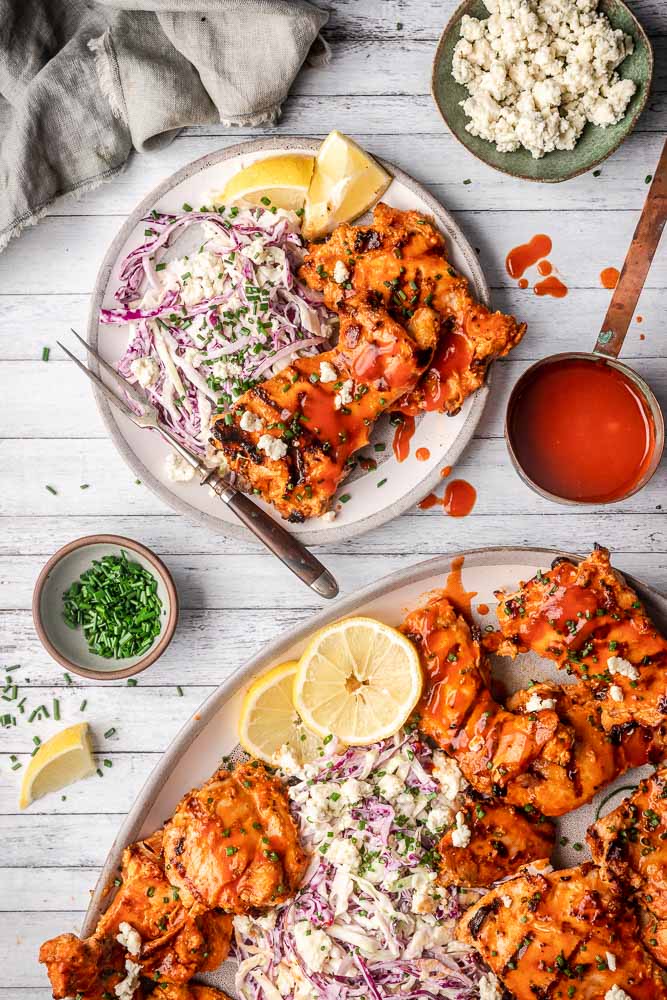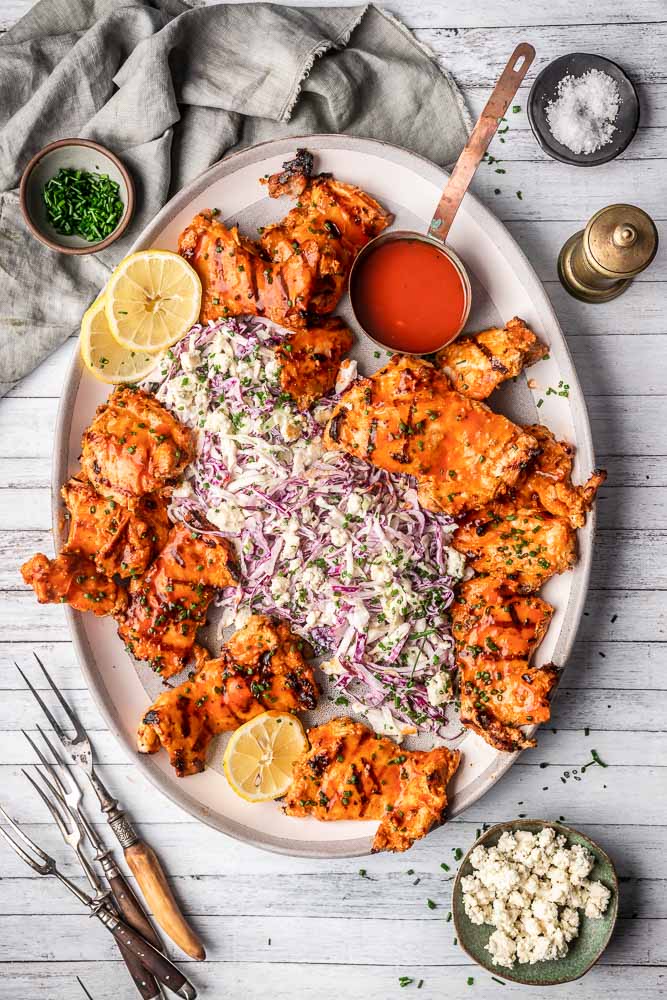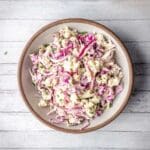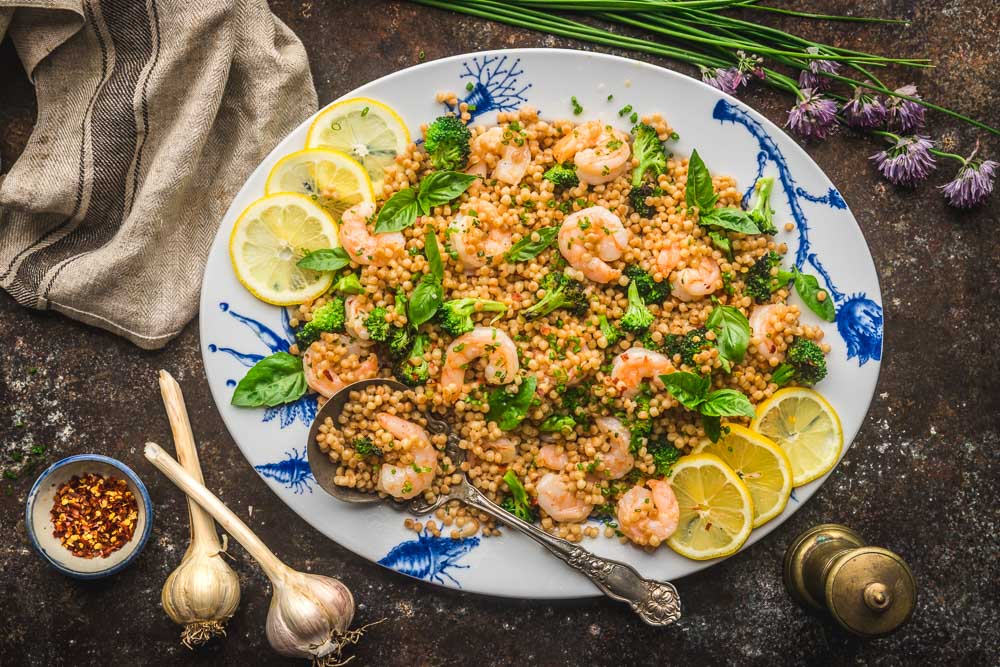
This shrimp couscous recipe is a sponsored post in partnership with Pescanova.
It will be of no surprise to you, our reader, that the “easy weeknight dinner” is the Holy Grail of the food blogging world. Of course we’ll happily write about a dinner-party crowd pleaser, or a weekend culinary project requiring several days of prep. But the recipes that people (including us) crave most? Something delicious you can cook up in less than half an hour on a Tuesday evening.
And whenever we review our Weeknight Quickies category, one ingredient that crops up time and again is shrimp. It makes sense, of course. Shrimp cook up super quickly — for most dishes, we get the other ingredients cooked first, before adding the shrimp in the last cooking step. Their delicate flavor partners well with many recipes, from a simple garlic and butter scampi preparation to a Southern-inspired Buffalo shrimp and grits.
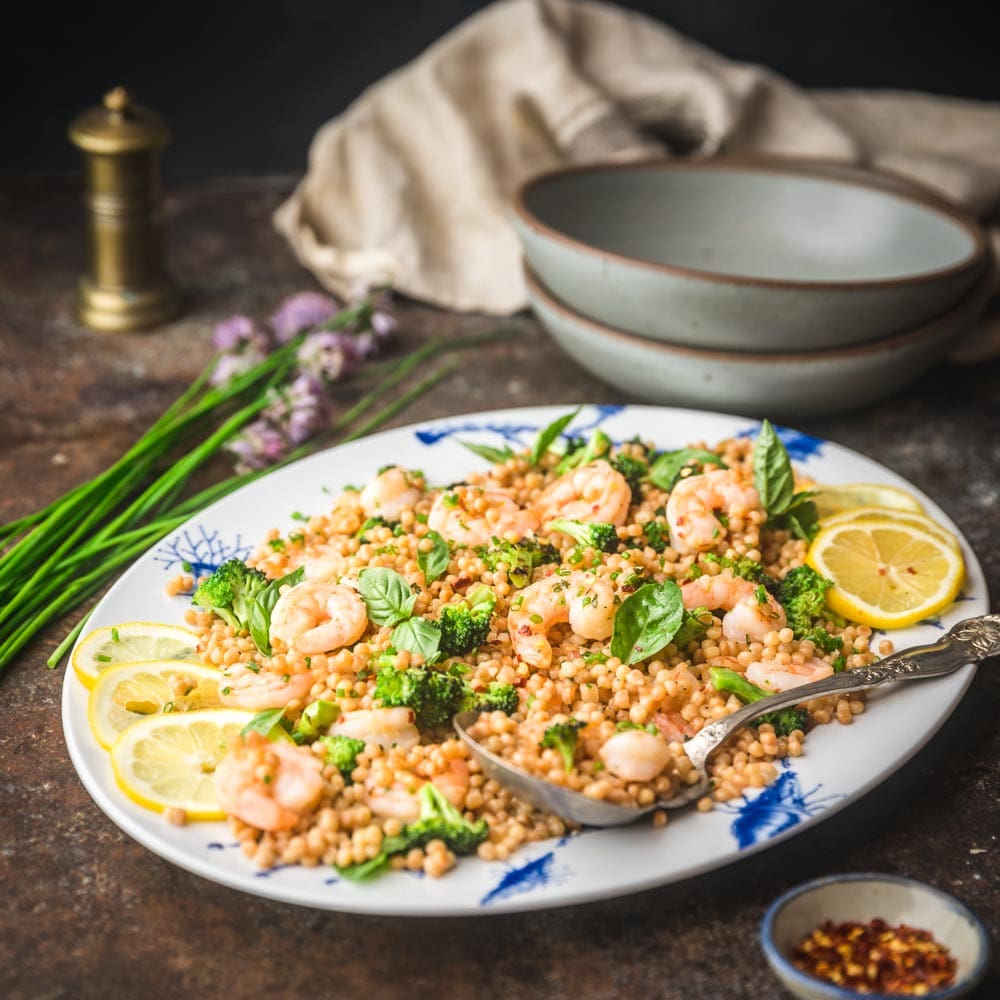
So Pescanova’s toss and serve Shrimp with Salted Butter and Garlic Sauce ticked our boxes right away. Their sustainably-farmed white shrimp comes with its own flavored butter pats which cook up into a gorgeous garlic butter sauce right in the pan. It even cooks straight from frozen. Their shrimp is so convenient to use that we just had to keep the recipe super quick and simple. We paired it with two other quick-cooking favorites, pearl couscous and broccoli florets, to make an easy shrimp couscous.
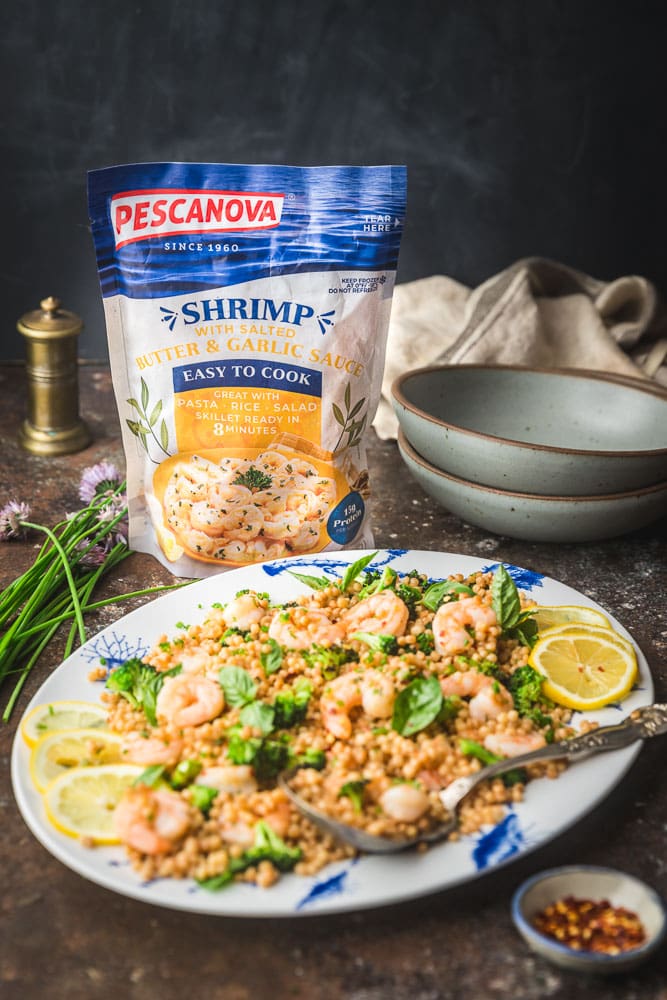
About the Couscous
You’ll probably find several varieties of couscous — tiny spheres of pasta made from semolina — in your grocery store. The most common variety (at least in the U.S.) is the smallest grain, known as Moroccan couscous. For this recipe, we like to use pearl couscous. The pearl variety is much larger, a little like a round orzo ball. You might also find it called Israeli couscous (p’titim), but technically that’s a different product, though you can use either here.
We often like to give pearl couscous a light toasting in the pot before adding liquid. Like most pastas, couscous doesn’t have a lot of flavor on its own, so the toasting step adds a nutty, toasty element. To do this, simply heat a little olive oil in the pot, add the couscous, and cook it, stirring it often until most of the spheres acquire a light golden brown color. It will only take a few minutes.
Next, we cook the couscous in a little stock to give it another kick of flavor. You can absolutely use water but our preference is chicken stock (home-made if possible), but you can also use vegetable stock or, for this recipe, fish or shrimp stock if you have some. Keep it on a low simmer until it’s tender, about 10 minutes, then turn off the heat and let it sit in the covered pot until you’re ready for it. Everything else will cook up extremely quickly, so have your serving dishes ready for the shrimp couscous!
Cooking the Broccoli and Shrimp
Alright, since the couscous is doing its thing in another saucepan, technically this isn’t a one-pan recipe. But we like to think it gets an honorable mention, since we’re going to do everything else in a skillet and mix the couscous back in right at the end.
Cut the broccoli florets up pretty small — no more than an inch in size. And definitely use the tender part of the stems! We keep the pieces small so they’ll sauté up and char very quickly, and not be so large that they overpower the shrimp.
Heat a little olive oil in a skillet, then add the broccoli, turning every so often until the outside has a little bit of that gorgeous char and the thickest parts are just becoming tender, about 4 to 5 minutes. Turn the heat down to medium. Now you can toss in the hero of the recipe, the shrimp and flavored butter. The butter pats included in the bag will melt and become a delicious buttery garlic sauce as the shrimp cook. Turn the shrimp in the sauce once or twice, making sure that both sides cook. You’ll know it’s ready when the shrimp have turned pink on both sides, and are opaque in the middle. Be careful not to overcook them so they stay tender.
Note: The packet instructions specify 8 minutes for this step, but you might find it takes less time — if you like, use an instant-read thermometer. You want the inside of the thickest part of the shrimp to be at about 145ºF.
Turn off the heat and stir in the couscous until everything is coated in that tasty sauce. Taste it for seasoning and add salt and pepper, as desired. We like to add a little fresh lemon juice, some chopped fresh herbs (basil and chives are our favorite when in season) and a little pinch of spicy red chili flakes. It’s that simple. Shrimp have always made a weeknight dinner quick, but Pescanova’s Salted Butter and Garlic Shrimp make it even more convenient. We think shrimp couscous is the perfect recipe to showcase it.
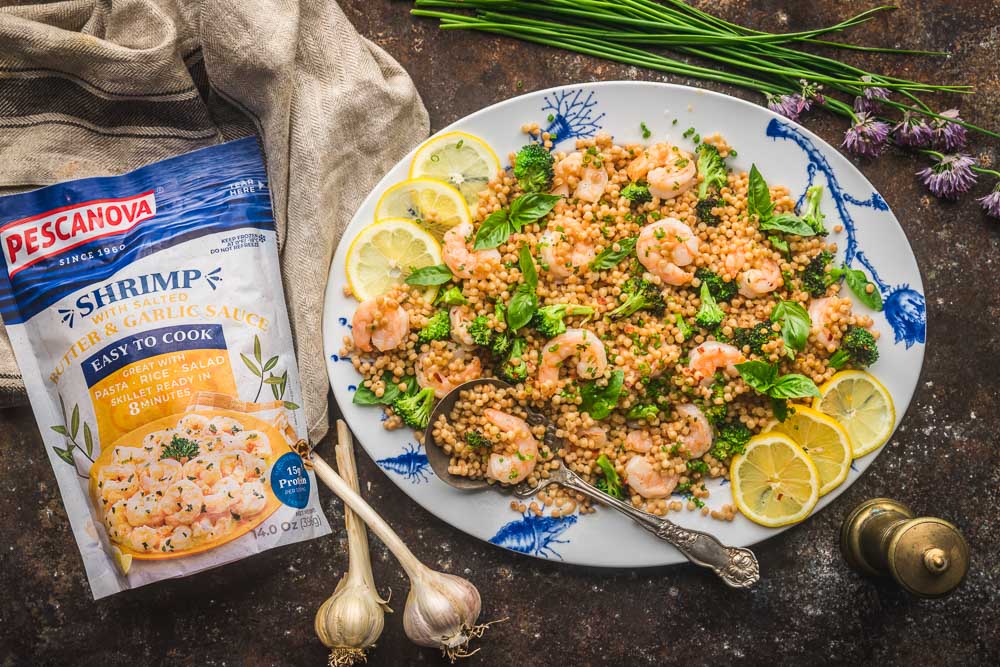
Garlic Butter Shrimp Couscous with Broccoli

When we want to whip up a weeknight dinner in just a few minutes, shrimp are the perfect solution. Pescanova's toss-and-serve shrimp in their own salted butter and garlic sauce are the star of this recipe, paired with lightly-charred broccoli and pearl couscous.
- 2 tablespoons olive oil (divided)
- 1 ½ cups pearl or Israeli couscous
- 2 cups low sodium chicken broth ((or vegetable/fish broth or water))
- 1/2 teaspoon kosher salt (plus more to taste)
- 1/4 teaspoon freshly cracked black pepper
- 1 small head broccoli (florets and tender stems cut into 1-inch pieces)
- 1 packet Pescanova Salted Butter and Garlic Shrimp
- 1 tablespoon lemon juice (plus more for serving)
- 1/4 cup roughly chopped chives, basil and/or parsley
Heat 1 tablespoon of the oil in a medium saucepan set over medium-high heat. Once the oil is shimmering, add the couscous and cook, stirring often, until the grains turn light brown and begin to smell toasty, about 2 to 3 minutes.
Add the stock (or water), season with salt and pepper and brink the liquid to a boil. Lower the heat to medium and cook until all the liquid is absorbed, 10-12 minutes. Fluff with a fork and set aside.
While the couscous is cooking, heat the other tablespoon of oil in a medium skillet set on medium-high. Add the broccoli and cook, tossing often, until the broccoli chars in spots and becomes tender, 5-6 minutes.
Lower the heat to medium, and add the shrimp and flavored butter pats from the bag, and toss until the shrimp is fully cooked and everything is coated in the flavored butter sauce.
- Add the couscous and toss until combined. Stir in lemon juice and fresh herbs and transfer to a serving platter.

